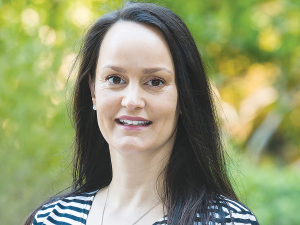Beef prices climb as supply contracts in key markets
With production volumes contracting in most major beef-producing regions, global cattle prices have continued to rise across recent months.
 Emma Higgins, RaboResearch, expects global market fundamentals to remain weak into the first half of next year.
Emma Higgins, RaboResearch, expects global market fundamentals to remain weak into the first half of next year.
Rabobank has lifted its forecast farmgate milk price by 40c to $6.35/kgMS.
However, RaboResearch senior dairy analyst Emma Higgins says its forecast remains towards the lower end of Fonterra’s forecast range of $5.90 to $6.90/kgMS as uncertainty looms large on the global market.
Covid-19 has brought significant disruption to global dairy markets but dairy commodity prices have been resilient and rallied in quarter two on the back of government support, in the form of government purchases, inventory management and fiscal stimulus for consumers.
Despite this, Higgins said global market fundamentals are expected to remain weak into the first half of next year, with consumption taking time to recover and milk production forecast to grow over the next 12 months.
“Food service revenues are improving, but they remain well back on pre-Covid levels and it will take time for this sector to make a full recovery, even for those countries that have been well ahead of the curve.
“We are also seeing early signs of retail dairy sales decelerating. Ultimately, year-on-year dairy demand growth is unlikely to be in sight for the key dairy-export regions until quarter one 2021,” she said.
The potential removal of government support programmes is another reason the bank is taking a cautious view towards the global dairy market recovery.
“These programmes have contributed significantly to improved dairy commodity prices over recent months, however, the outlook for these is much less certain as we move into the final quarter of the year.”
Higgins said uncertainty over Chinese demand and an anticipated lift in global dairy production were additional reasons for caution.
“Chinese dairy import behaviour over the next six to nine months presents uncertainties. So far Chinese dairy consumption has recovered better than expected, but China’s strengthening domestic production and possible shift in stocking strategy raises questions over its import requirement into 2021,” she said.
“We also expect to see global dairy supply across the big seven dairy exporters – US, Uruguay, Brazil, Argentina, EU, Australia and New Zealand – to continue to increase over the course of this year and into the first half of next.”
Fonterra this month reaffirmed its wide forecast range with co-op chairman John Monaghan noting that the impact of Covid-19 is still playing out globally.
Monaghan says from a milk price perspective, the supply and demand picture remains finely balanced.
“There continues to be significant uncertainties – including how the global recession and new waves of Covid-19 will impact demand globally, and what will happen to the price relativities between the products that determine our milk price and the rest of our product range.
“As a result of these uncertainties and given that financial year has just begun, we are giving a forecast earnings range wider than we usually would.”
With the current situation in the European farm machinery market being described as difficult at best, it’s perhaps no surprise that the upcoming AgriSIMA 2026 agricultural machinery exhibition, scheduled for February 2026 at Paris-Nord Villepinte, has been cancelled.
The Meat Industry Association of New Zealand (MIA) has launched the first in-market activation of the refreshed Taste Pure Nature country-of-origin brand with an exclusive pop-up restaurant experience in Shanghai.
Jayna Wadsworth, daughter of the late New Zealand wicketkeeper Ken Wadsworth, has launched an auction of cricket memorabilia to raise funds for I Am Hope's youth mental health work.
As we move into the 2025/26 growing season, the Tractor and Machinery Association (TAMA) reports that the third quarter results for the year to date is showing that the stagnated tractor market of the last 18 months is showing signs of recovery.
DairyNZ chair Tracy Brown is urging dairy farmers to participate in the 2026 Levy vote, to be held early next year.
Beef + Lamb New Zealand (B+LNZ) is calling for nominations for director roles in the Eastern North Island and Southern South Island electoral districts.